What is the Best Way to Keep Hydrangeas Alive? Tips for Thriving Blooms
If you’re wondering how to make those beautiful hydrangeas last, you’re not alone. These vibrant blooms are popular in gardens and vases alike, but keeping them alive can sometimes be a challenge. The best way to keep cut hydrangeas fresh is to cut their stems at an angle and place them in hot water to prevent wilting. This simple trick can revive drooping blooms and keep them looking gorgeous for weeks.
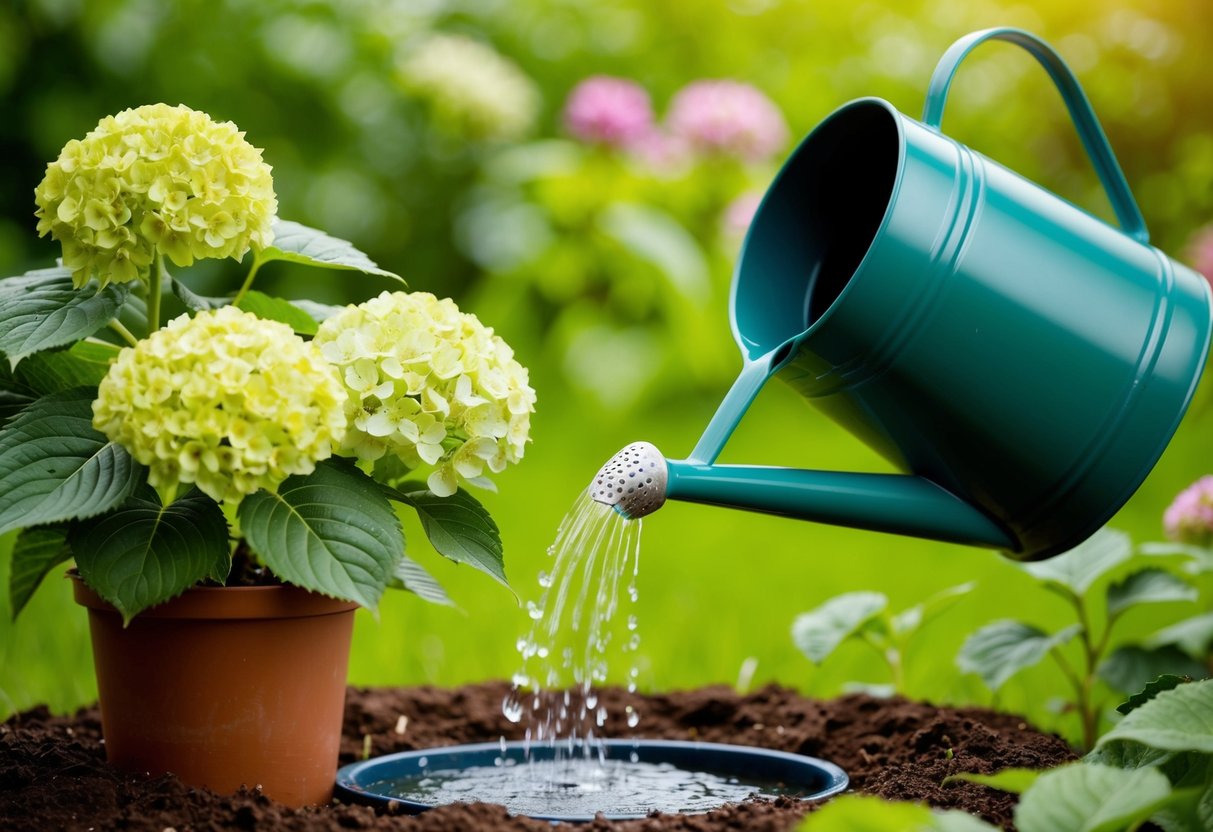
Growing hydrangeas in your garden requires a bit of care but is well worth the effort. Hydrangeas thrive in well-draining soil, so consider adding compost to enrich the ground.
Regular, deep watering encourages strong roots and helps the plant withstand dry spells. With a little attention, your hydrangeas will bloom proudly all season long.
Whether you’re displaying cut hydrangeas or nurturing them in your garden, understanding their needs is key to keeping them healthy. Hydrangeas cut in the early morning tend to stay fresher, and giving your garden plants an ice bath during hot days can help revive them. Embrace these tips to enjoy the beauty of hydrangeas in your home and garden.
Understanding Hydrangeas

Hydrangeas are beloved garden shrubs known for their large, showy blooms. Understanding the types and growing conditions helps you keep them vibrant and healthy.
Various Hydrangea Types
There are several types of hydrangeas, each with its unique characteristics. Bigleaf hydrangeas are known for their large, rounded blooms that change color based on soil acidity. They are popular in gardens for their vivid hues of pink, blue, and purple.
Panicle hydrangeas feature cone-shaped flowers and tend to be more tolerant of the sun and cold. These can change color from white to pink as they age.
Smooth hydrangeas, often recognized for their hardy nature, produce large white blooms that can turn greenish or even pinky-white by late summer. Understanding the specific needs of each type helps you provide better care and enjoy their beauty throughout the growing season.
Ideal Growing Conditions
For the best hydrangea care, it’s important to provide the right growing conditions. Most prefer consistently moist (not soggy) soil and benefit from deep watering at least once or twice a week, especially during hot or dry weather.
Face your hydrangeas towards the east or north to prevent the midday sun from scorching their delicate flowers. They thrive in well-drained soil enriched with organic matter, so consider adding mulch to maintain soil moisture.
White hydrangeas are less affected by soil acidity but pay attention to their water needs. The ideal environment varies among the different varieties, so adjusting your care to their preferences ensures healthy growth and stunning blooms.
Planting and Initial Care
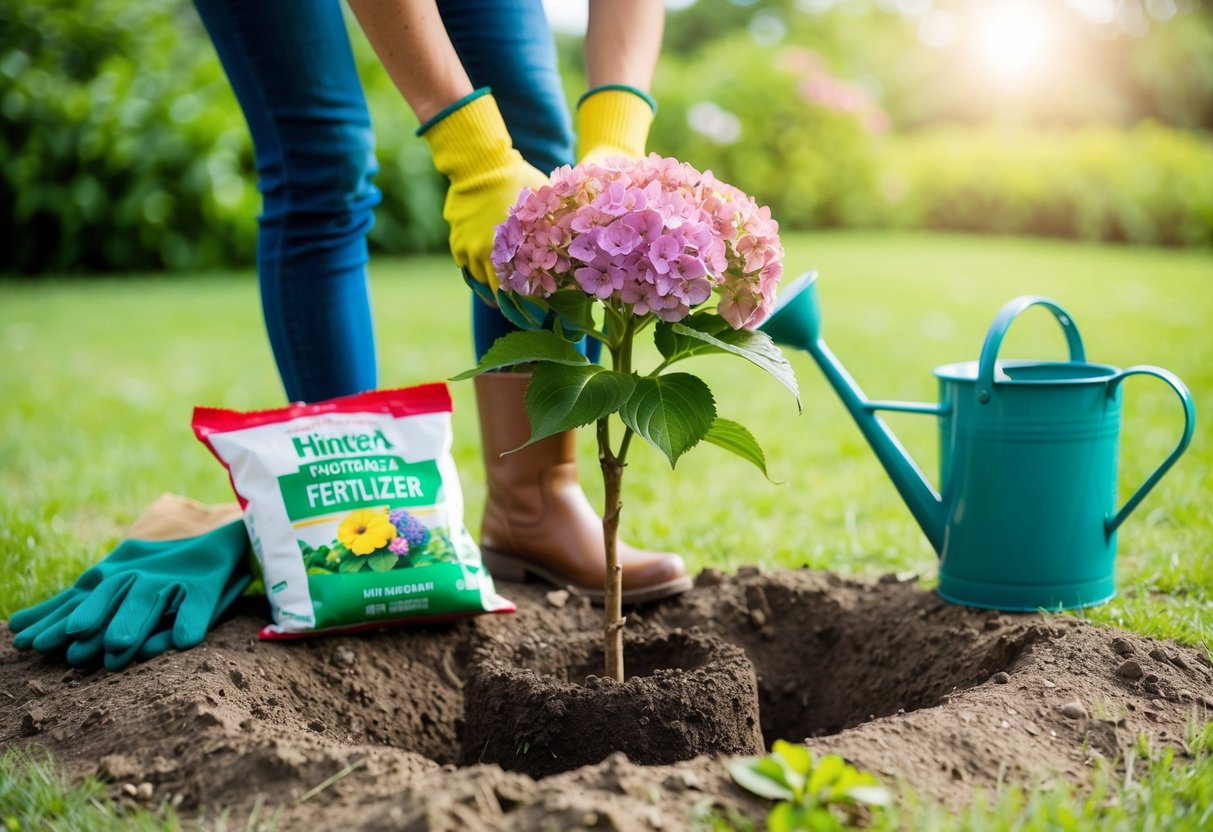
When planting hydrangeas, focus on preparing the soil and understanding their watering and sunlight needs. This ensures the plants thrive and produce vibrant blooms that enhance your garden.
Soil Preparation and Planting
Hydrangeas flourish in rich, well-draining soil. Before planting, mix plenty of organic matter like compost into the soil to improve its quality. This will provide essential nutrients and create an environment where roots can spread easily.
Choose a location with good air circulation but sheltered from strong winds. Dig a hole twice as wide as the root ball and deep enough so the top of the root ball is level with the soil surface.
After planting, add a layer of mulch around the base to prevent weeds and keep moisture. This hydrangea care guide suggests adding a thick mulch layer to protect the soil.
Watering and Sunlight Needs
Hydrangeas need consistent moisture, so water them deeply about once or twice a week. This helps the roots grow deeply and makes the plant more resilient during dry spells. Avoid soggy soil, which can harm the roots. On hot days, more frequent watering might be necessary to prevent wilting.
Hydrangeas generally thrive in bright, filtered sunlight. They do well in the morning sun with afternoon shade. This prevents them from getting too hot and helps maintain moisture levels. Ensure they are not exposed to harsh midday sun, as this can stress the plants. For more tips on maintaining hydrangeas, check out this hydrangea care resource.
Maintaining Healthy Hydrangeas
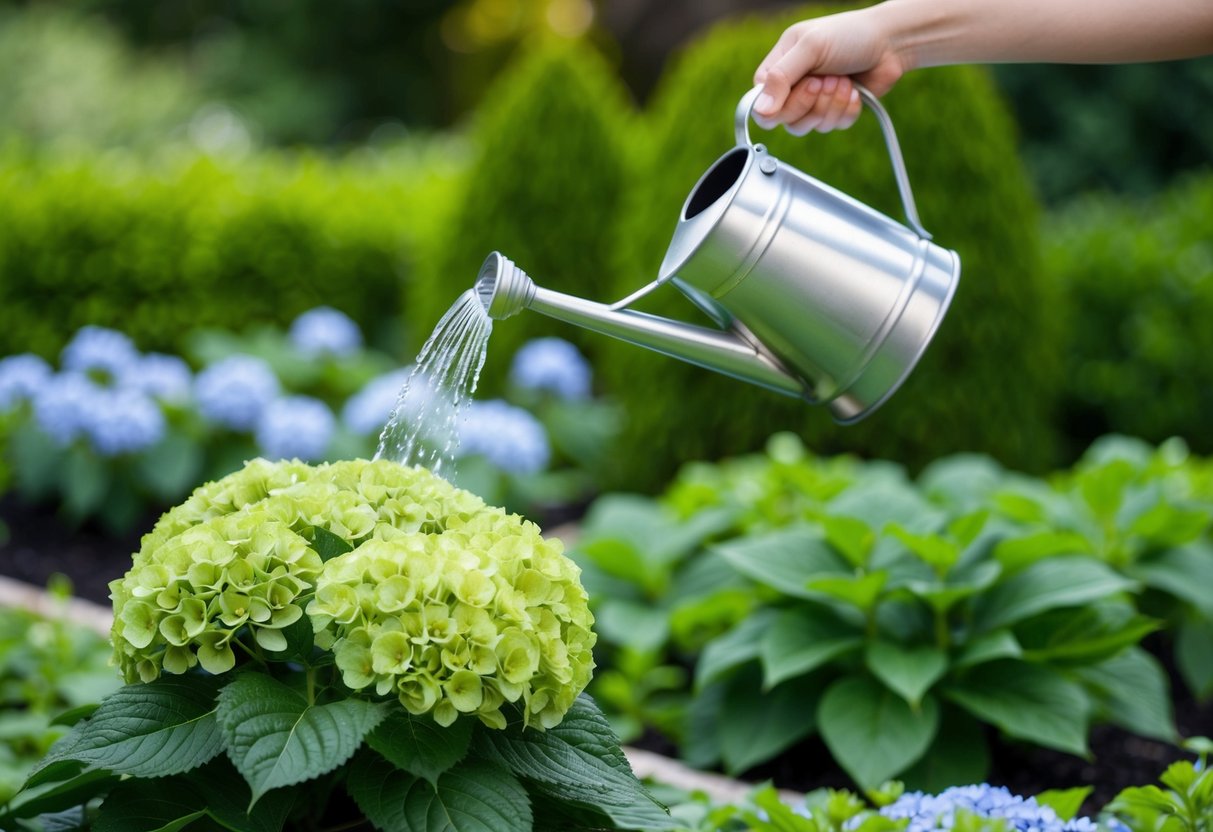
To keep your hydrangeas thriving, focus on proper pruning techniques and careful management of soil nutrients. Regular care prevents pests and ensures beautiful blooms throughout the season.
Pruning Techniques
Pruning your hydrangeas is essential for promoting healthy growth and vibrant blooms. The best time to prune most types of hydrangeas is in late winter or early spring. This timing helps your plant focus its energy on new growth.
When pruning, remove any dead wood and thin out crowded branches. This allows sunlight and air to reach the center of the plant, decreasing the likelihood of disease.
If your hydrangeas bloom on old wood, like certain garden varieties, avoid extensive pruning as this can reduce the number of blooms.
Keep your pruning tools clean and sharp. This minimizes injury to the plant and helps prevent the spread of fungal infections. Always make clean cuts at a slight angle, which lets water drain away from the cut surface.
Fertilization and Pests Control
Fertilizing your hydrangeas regularly provides key nutrients that the plants need to produce lush blooms.
Use a balanced fertilizer in early spring, as this gives plants a strong start. Avoid over-fertilization since too much nitrogen can lead to fewer flowers.
Hydrangeas are sometimes prone to pests and diseases. Common pests include aphids, spider mites, and scale insects.
You can manage these pests with insecticidal soap or neem oil. Encourage natural predators like ladybugs to help control the pest population.
Watch for signs of disease such as leaf spots or mildew. Good gardening practices like removing infected leaves and ensuring proper air circulation around the plants can reduce the risk of disease. Always keep a close eye on your hydrangeas to catch any issues early.
Hydrangea Aesthetics
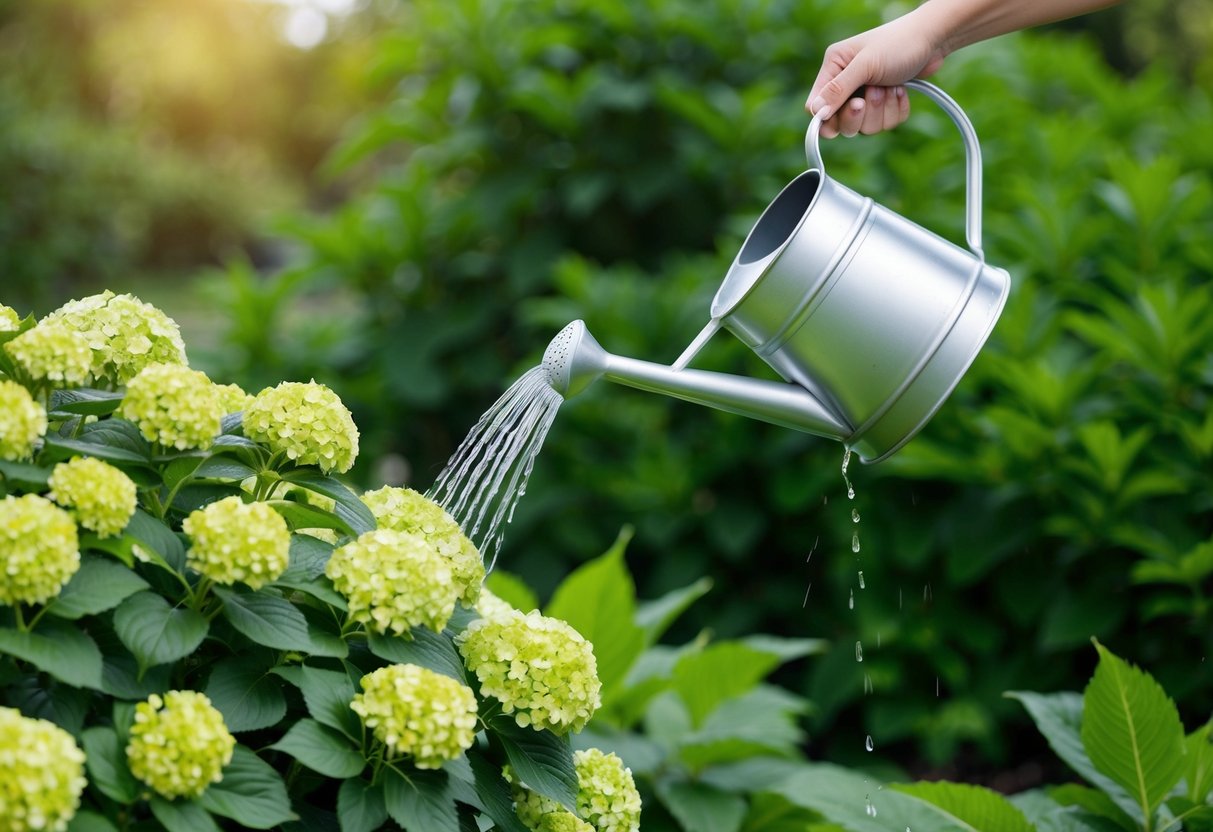
Hydrangeas are a beautiful choice for any floral design and can brighten up any space. Keeping their color vibrant and arranging them creatively can transform your home or event decor.
Creating Stunning Arrangements
When arranging hydrangeas, you have many creative options. You can mix them with other flowers or use them alone for a classic look. Hydrangea bouquets look elegant when placed in tall vases, their large blooms drawing attention.
White hydrangea blooms offer a timeless look. Combine them with greenery for a fresh, natural style. Use contrasting colors like deep purple or vibrant pink for more visual interest.
It’s helpful to trim the stems at an angle to optimize water intake, ensuring your arrangement stays fresh.
Color Maintenance for Vibrancy
Keeping the vibrant colors of hydrangeas is important for aesthetic appeal. These flowers can change color based on the soil’s pH.
To maintain blue blooms, keep the soil acidic, while a more alkaline environment will enhance pink shades.
Hydrangeas need daily water changes to minimize bacteria buildup, which can dull colors. Adding a few drops of vinegar to the water can help maintain acidity for richer tones. Regularly removing wilted leaves and petals helps the blooms look their brightest, ensuring that your floral display remains stunning.
Cut Hydrangea Care
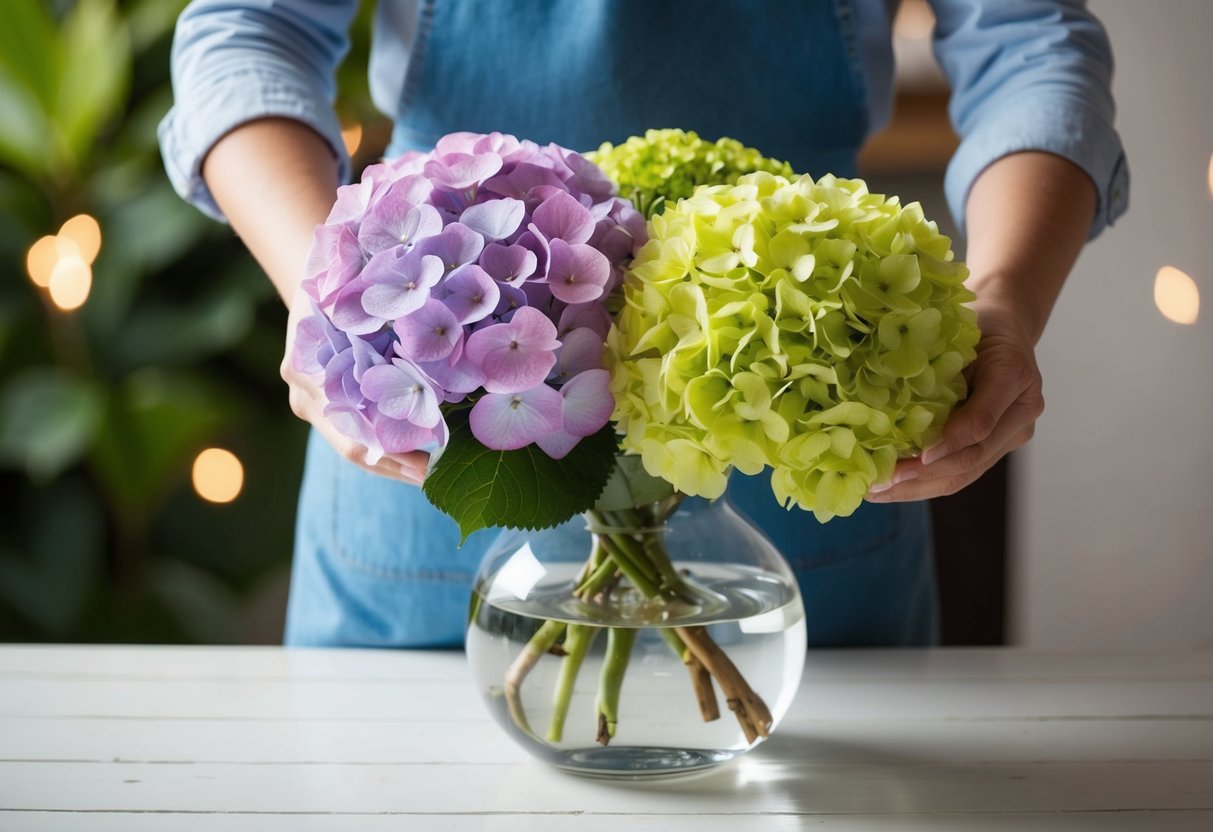
Taking care of cut hydrangeas involves using the correct cutting techniques and extending their freshness once they are in a vase. With a bit of effort, you can keep your hydrangeas looking bright and lovely for as long as possible.
Proper Cutting Techniques
When cutting hydrangeas, it’s important to do it right to ensure their longevity. Always carry a container of water to the garden when cutting. Place each cut hydrangea stem immediately into the water to prevent wilting.
Cut hydrangea stems at a diagonal. This increases the surface area for water absorption, helping your cut flowers stay fresh.
Use sharp scissors or pruning shears for a clean cut, as crushed stems can block water uptake.
Once indoors, submerge the stems in warm water briefly. You can try placing them in boiling water for about 30 seconds, which can help prevent drooping.
Extending Freshness After Cutting
To keep cut hydrangeas fresh, you need to maintain a consistent care routine. Replace the water in the vase every two days. This minimizes bacteria buildup, which can clog the stem and block water absorption.
For additional support, use chicken wire in the vase to keep the stems upright. Ensure the hydrangeas are submerged in fresh water to keep them hydrated. Avoid using floral foam, as it may disrupt water uptake.
Placing the vase in a cool spot away from direct sunlight helps extend the life of your hydrangeas. By following these tips, you’ll enjoy your vibrant blooms much longer. This will let you admire and appreciate their beauty for weeks.







